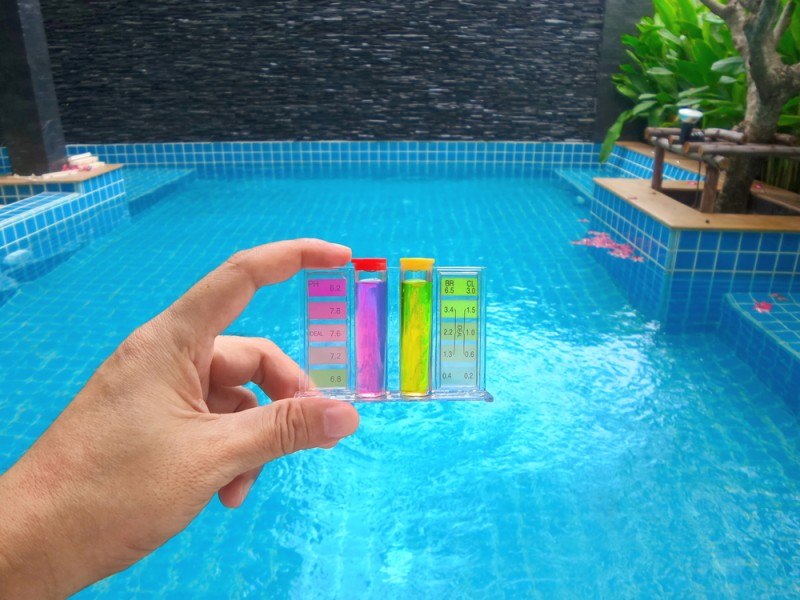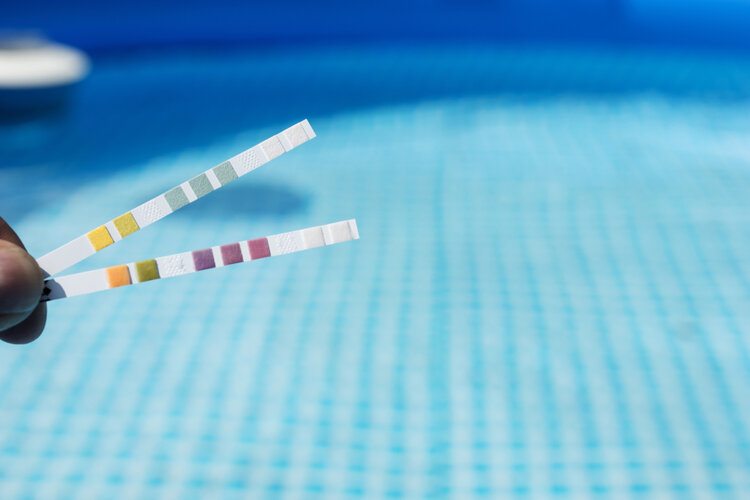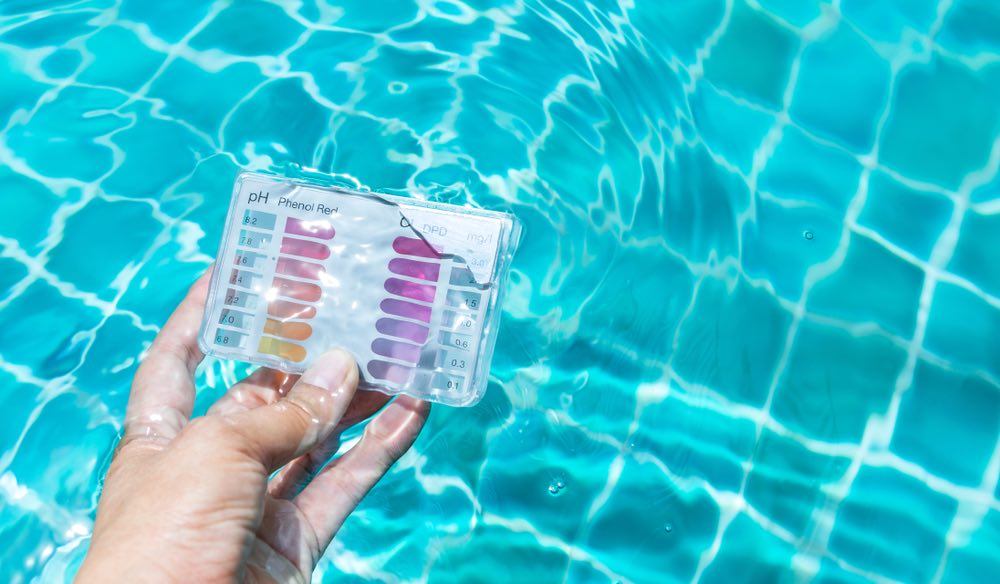How to Quickly Raise the pH Level in Your Pool
-

- Last updated:


Your pool pH level can be one of the hardest levels to maintain. It seems as though the pH has changed by a little bit every time you check your pool. The good news is that pH only has to be within a specific range. However, if it drops below that recommended range, you can experience some less than desirable side effects in your pool. Increasing the pH of your pool is not difficult.
Here is our best advice on how to quickly raise the pH of your pool and get your levels back to where they need to be.
What Level of pH is Too Low?
Your pH level should always be between 7.4 and 7.8. Anything lower than 7.3 will need your attention.
How to Raise Your pH Level
- Test your current pH level in the pool. You will always want a baseline to start with, and you will need this information when calculating how much chemical to add to your pool.
- You will need to know the size of your pool and the level of your pH. When you have those two numbers, you can move on to step 3.
- Purchase some soda ash or sodium carbonate to help increase the pH in your pool. Several manufacturers make this product; here are a few examples.
- Make sure to do your calculations before purchasing your chemicals. Depending on the size of your pool, you may need to buy a larger package.
- Carefully add the sodium carbonate according to the manufacturer’s recommendations. You do not want to add so much that you will then need to lower your pH. Most of the time, it makes sense to use about ¾ of the recommended amount of chemical and see where that leaves you. It is much easier just to add a little more than it is to have to lower the pH in your pool.
- Test your pool water again. If the pH level is perfect, move on to the next step, finding out why this all started! If your pH level is not quite right, follow the instructions on the package to increase it to 7.4 to 7.8.
Why Was the pH Low to Begin With?
The two main things that will affect the pH level in your pool are rainwater and alkalinity. Anytime your pH is off, it pays to check the alkalinity to make sure there are no issues.
If you just recently had a rainstorm, your pH may be lower because of that. It is essential to check your pool levels after a rainstorm in case adjustments need to be made.
Why Does It Matter If My pH is Low?

If you are thinking of letting your pool just work on increasing its pH over time, this is not the best idea. It is crucial to get the pH level back within range as soon as possible. Low pH can cause the following issues.
- Skin and eye irritation: Anytime pH is off in your pool, either up or down, it can cause some issues for swimmers. When the pH is low, it means that your water is more acidic, and that can be very difficult for humans to handle.
- Corrosion: Just as humans don’t like swimming in acidic water, pool equipment does not handle acidic water all that well. If left untreated, a low pH value in your pool will start to destroy the pool equipment. This includes your liners, skimmers, and plumbing.
- Wasting Chlorine: When a pool’s pH value is either high or low, it will make the pool go through chlorine at a much faster rate. With how expensive pool chlorine is, this should be motivation enough to get your pH levels back to where they need to be. If you are not checking your pH levels often but realize you are going through extra chlorine, this could be a sign that your pH is off.

How to Maintain pH Moving Forward?
Unfortunately, there is no way to maintain the pH in your pool perfectly. It is a level that will vary from time to time, based on weather and environmental conditions. The best possible thing you can do is check your pH levels often. If something is just slightly off, it is a much easier and cheaper fix than waiting until you have significant issues.
In Conclusion
If your pool’s pH levels are always consistent and you notice a dip, don’t panic. If you catch a pH problem right from the start, chances are you will be able to fix it before there is any damage to your equipment or irritation to your swimmers. The best way to keep any pool problem at bay is to check the water frequently. Luckily, sodium carbonate is an easy chemical to work with, and it is quick and effective at increasing the pH in your pool.
- You may also like: 7 Free Above Ground Pool Deck Plans You Can DIY (with Pictures)
Featured Image Credit: oneSHUTTER oneMEMORY, Shutterstock
Contents

